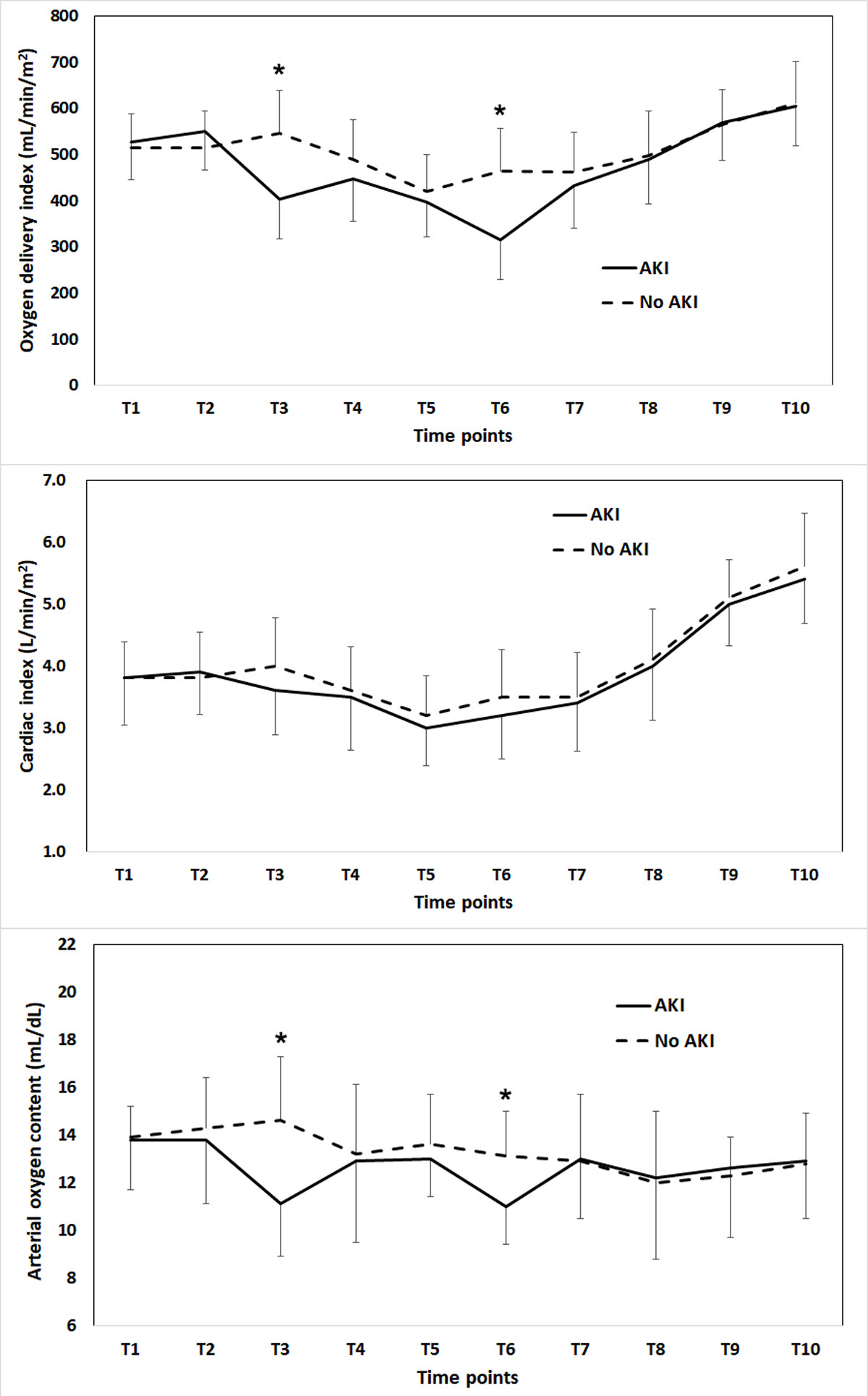Intraoperative Oxygen Delivery and Acute Kidney Injury after Liver Transplantation
Anesthesiology and Pain Medicine, Seoul National University Hospital, Seoul, Korea, Republic of
Meeting: 2020 American Transplant Congress
Abstract number: C-133
Keywords: Kidney, Liver transplantation, Renal injury, Risk factors
Session Information
Session Name: Poster Session C: Liver - Kidney Issues in Liver Transplantation
Session Type: Poster Session
Date: Saturday, May 30, 2020
Session Time: 3:15pm-4:00pm
 Presentation Time: 3:30pm-4:00pm
Presentation Time: 3:30pm-4:00pm
Location: Virtual
*Purpose: Although intraoperative hemodynamic variables were reported to be associated with acute kidney injury (AKI) after liver transplantation, the time-dependent association between intraoperative oxygen delivery and AKI has not yet been evaluated. We attempted to evaluate the association between intraoperative oxygen delivery and AKI after liver transplantation.
*Methods: We reviewed 676 series of liver transplantation. Oxygen delivery index (DO2I) was calculated at least ten times during surgery. AKI was defined according to the Kidney Disease Improving Global Outcomes criteria. The area under the curve (AUC) was calculated as below DO2I of 300 (AUC<300), 400 and 500 ml/min/m2 threshold. Also, the cumulative time below DO2I of 300 (Time<300), 400, and 500 ml/min/m2 were calculated. Multivariable logistic regression analysis was performed to evaluate whether DO2I-related variables were significantly associated with AKI. Model discrimination was quantified by the area under the receiver operating characteristic curves (AUROC) and risk classification by category-free net reclassification improvement (NRI). Propensity score analysis was performed between the two mean DO2I groups.
*Results: Multivariable analysis showed that AUC<300 (odds ratio 1.10, 95% confidence interval 1.06-1.13) or time<300 (odds ratio 1.10, 95% confidence interval 1.08-1.14) was an independent predictors of AKI. When AUC<300 was added, the regression model improved in discrimination (AUROC=0.79 vs. 0.74; P<0.001) and reclassification (category-free NRI 0.590; P<0.001). This was also true for time<300. AUROC and reclassification of the model with time<300 were also significantly superior to the model with mean hemoglobin and cardiac index (AUROC=0.78 vs. 0.74; P<0.001, NRI 0.328; P<0.001), which may suggest that monitoring only hemoglobin and cardiac index is not sufficient and monitoring DO2I is additionally required. The incidence of AKI was significantly higher in low mean DO2I group after matching.
*Conclusions: There was a significant and robust time-dependent association between the intraoperative poor oxygen delivery and the risk of AKI after liver transplantation. Intraoperative optimization of oxygen delivery may mitigate the risk of AKI.
To cite this abstract in AMA style:
Kim W, Lee H, Yoon H, Suh K. Intraoperative Oxygen Delivery and Acute Kidney Injury after Liver Transplantation [abstract]. Am J Transplant. 2020; 20 (suppl 3). https://atcmeetingabstracts.com/abstract/intraoperative-oxygen-delivery-and-acute-kidney-injury-after-liver-transplantation/. Accessed July 2, 2025.« Back to 2020 American Transplant Congress

